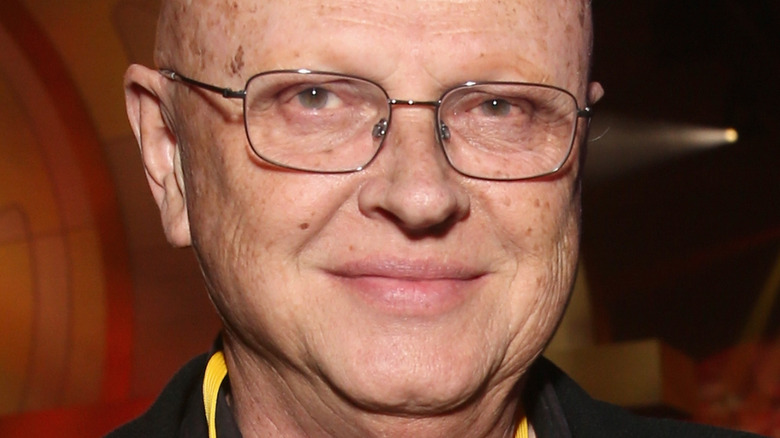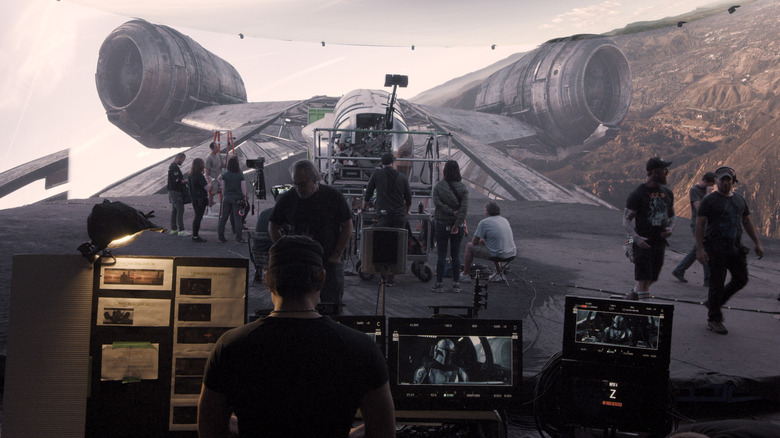Dennis Muren On The Continuing Impact Of VFX Powerhouse Industrial Light And Magic - Exclusive
Since its inception in 1975, Industrial Light and Magic (ILM) has been at the forefront of the film industry, contributing to scores of now-classic movies and constantly pioneering new ways to bring the vision of filmmakers to life on the screen. A new documentary series, "Light and Magic," chronicles the company's illustrious history, from its make-it-up-as-we-go beginnings to today.
ILM has come a long way from its early days in a hot Van Nuys, California, warehouse, where George Lucas put together a team of young artists, sculptors, animators and camera people — some of them barely out of college — to create the VFX for a little movie he was making called "Star Wars."
That initial team included John Dykstra, Dennis Muren, Phil Tippett, Ken Ralston, John Berg, Richard Edlund, Joe Johnston, and many more who have continued to blaze new paths in their profession, either with ILM or not. "It was very lucky the way it all happened," Muren told Looper. "But also [there were] a lot of smart people working on it."
Muren remains at the company as Consulting Creative Director, while John Dykstra supervised the VFX for Sam Raimi's "Spider-Man" and "Spider-Man 2," among others. Phil Tippett recently directed the acclaimed stop-motion fantasy "Mad God," while Joe Johnston's directorial credits include "Jurassic Park III," "The Rocketeer," and "Captain America: The First Avenger." As for ILM itself, it's still going strong more than 300 projects later.
ILM continues to create breakthroughs for visual effects
One of the first innovations created at ILM was when John Dykstra and others (via Den of Geek) invented the motion control camera system known as the Dykstraflex, which used an early computer to control and repeat complicated camera movements. The system allowed cameras to move much more freely around the spaceship miniatures for the battles in "Star Wars," creating more intricate dogfights than had ever been attempted before.
In the decades since, ILM has continued to break new ground in VFX technology. As the age of digital effects dawned, ILM created the first fully computer-generated sequence (the "Genesis effect" in "Star Trek II: The Wrath of Khan"), the first all-CG, three-dimensional characters (for "The Abyss" and "Terminator 2: Judgment Day"), and the incredibly lifelike dinosaurs in "Jurassic Park," among many other accomplishments.
ILM scored another breakthrough in 2019 with StageCraft (aka The Volume), a virtual set visible to both the actors and crew and able to be repositioned during shooting to make adjustments for new camera angles or compositions (instead of it being added to completed shots in post-production). The technology made its official debut in the Disney+ series "The Mandalorian."
"People look to ILM for the future because we've been the future for so long," said Dennis Muren about the company's continued importance in the film industry. "It's always been something that's in our culture and it's from George [Lucas] walking in and saying, 'I want to pan the camera around these spaceships,' and everybody's saying, 'No, you can't do it,' and John Dykstra said, 'We can do it.' That's what's there. That's true in everything we do. I don't think that's ever going to go away. That's part of us and everybody has strived for that sort of thing."
"Light and Magic" is streaming on Disney+ now.

